5 Essential Lawn Care Tips for Surviving a Heat Wave
- February 7, 2025
- 0 comment
As temperatures soar, keeping your lawn lush and green can be a real challenge. Heat waves put added stress on your grass, making it essential to adapt your lawn care routine. By implementing a few key strategies, you can help your lawn withstand the extreme heat and emerge looking healthy. Discover these essential lawn care tips designed to protect and nourish your yard during the hottest months.
What is a Heat Wave?
A heat wave is a prolonged period of excessively hot weather, often defined as a stretch of days with temperatures significantly higher than the average for a given region. Heat waves can be caused by high-pressure systems that trap warm air in a specific area, preventing cooler air from entering. These events are typically characterized by temperatures reaching or exceeding 90°F (32°C) and can be further exacerbated by high humidity levels, which make the heat feel even more intense. Heat waves are more common in summer but can occur at any time of year, depending on geographic and climatic conditions.

The impacts of a heat wave extend beyond mere discomfort; they can strain infrastructure, affect public health, and disrupt daily life. Prolonged exposure to extreme heat can lead to heat-related illnesses such as heat exhaustion and heat stroke, particularly among vulnerable populations like the elderly, children, and those with preexisting health conditions. Additionally, heat waves can stress natural systems, including agriculture and water resources, and increase the risk of wildfires. Managing and mitigating the effects of heat waves requires proactive measures, including adjusting daily routines, ensuring adequate hydration, and providing shade and cooling options.
5 Essential Lawn Care Tips
1. Water Wisely
Proper watering is crucial for maintaining a healthy lawn during a heat wave. Early morning is the ideal time to water your lawn, as this allows the grass to absorb moisture before the sun’s intense rays can cause rapid evaporation. Aim to water deeply and infrequently, ensuring that the soil receives sufficient moisture down to the root zone. This practice encourages grass roots to grow deeper, making the lawn more resilient to heat stress. Avoid shallow watering, as it can lead to weak root systems and increased vulnerability to heat damage.
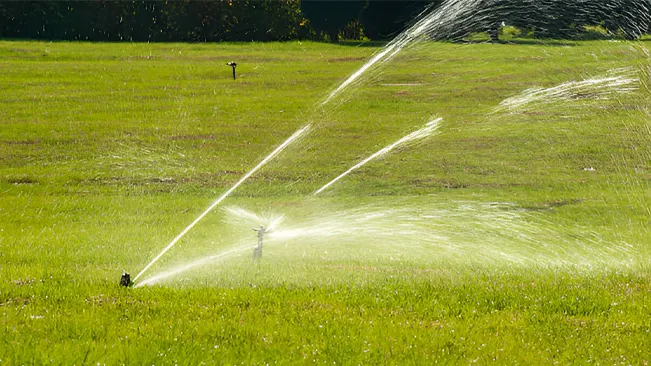
During a heat wave, adjusting your watering schedule might be necessary. Reduce the frequency of watering to prevent water wastage and avoid encouraging shallow root growth. Instead, focus on giving your lawn a thorough watering every few days, depending on rainfall and soil conditions. Be mindful of local water restrictions and adapt your watering practices to comply with any regulations in place. By watering wisely, you can help your lawn survive the extreme temperatures while conserving water resources.
2. Mow Higher
Mowing your lawn at a higher setting can significantly benefit your grass during hot weather. By increasing the height of your mower blades, you allow the grass to grow taller, which provides several advantages. Taller grass creates shade for the soil, reducing evaporation and helping to retain moisture. Additionally, longer grass blades can protect the crown of the plant, which is the part most susceptible to heat stress. This practice also encourages deeper root growth, making your lawn more drought-resistant and better equipped to handle prolonged heat.
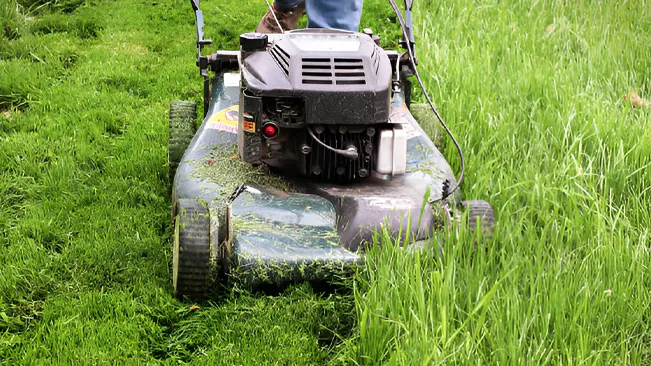
Avoid cutting more than one-third of the grass height at a time, as removing too much can stress the lawn and reduce its ability to photosynthesize. Regular mowing at the higher setting will keep your lawn healthier and better prepared to endure heat waves. In addition to the benefits for your grass, a well-maintained, higher-mowed lawn often looks more lush and vibrant, enhancing the overall appearance of your yard.
3. Limit Traffic
Minimizing foot traffic on your lawn during a heat wave is essential for preventing further stress on the grass. Excessive use can compact the soil and damage the grass, making it more difficult for the lawn to recover from heat stress. Compacted soil restricts root growth and reduces the lawn’s ability to absorb water and nutrients, exacerbating the effects of high temperatures. By limiting the use of your lawn for recreational activities or heavy foot traffic, you allow the grass to conserve its energy and focus on surviving the heat.
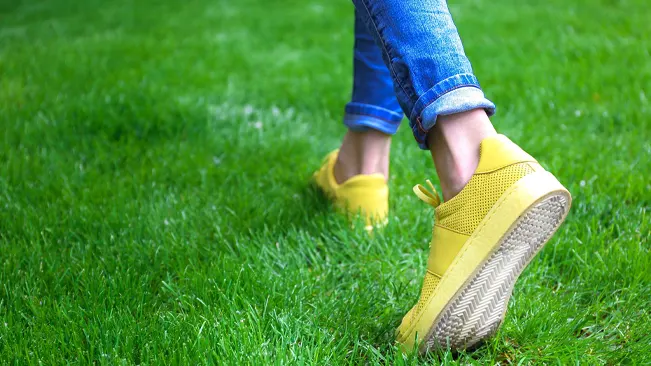
If you have areas of your lawn that are particularly affected by traffic, consider implementing temporary barriers or alternative pathways to protect these zones. Providing designated play areas or using mulch and stepping stones can help reduce wear and tear on the grass. This strategy not only helps your lawn withstand heat waves but also contributes to maintaining a more uniform and attractive yard.
4. Time Treatments by Temperature
Timing lawn care treatments according to temperature is crucial for effective lawn maintenance during a heat wave. For instance, avoid fertilizing your lawn during extremely hot weather, as it can stress the grass and lead to potential burn damage. Fertilizers can increase the lawn’s nutrient needs and exacerbate heat stress. Instead, plan to apply fertilizers during cooler periods or early in the growing season when the grass can better utilize the nutrients without added strain.
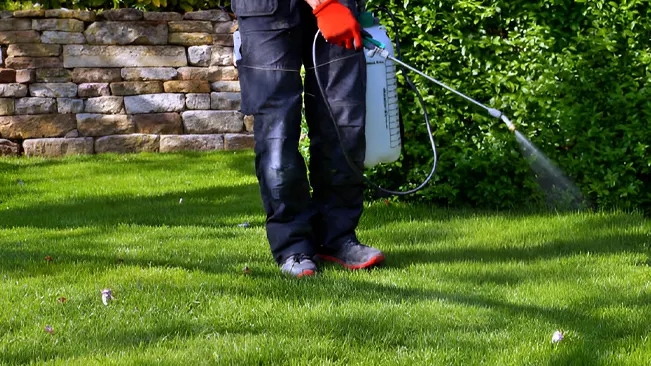
Similarly, schedule other treatments, such as herbicides and pesticides, when temperatures are more moderate. High temperatures can affect the efficacy of these products and may increase the risk of harming your lawn. By aligning your lawn care activities with temperature conditions, you ensure that treatments are applied effectively and reduce the risk of causing additional stress to your grass.
5. Keep an Eye on the Weather
Monitoring the weather is essential for adapting your lawn care practices to changing conditions. By staying informed about upcoming temperature fluctuations, you can adjust your watering, mowing, and treatment schedules accordingly. For example, if a heat wave is predicted, you might increase watering frequency before the extreme temperatures hit to ensure your lawn is well-hydrated. Conversely, if cooler weather is expected, you might reduce watering and take advantage of the more favorable conditions for lawn care activities.

Weather forecasts can also help you plan for potential rain events, which can affect watering needs and other lawn care practices. Utilizing weather data allows you to make proactive adjustments and better manage your lawn’s health throughout the heat wave. Keeping an eye on the weather not only helps in maintaining a robust lawn but also enables you to make informed decisions that contribute to long-term lawn care success.
Lawn Recovery and Maintenance Post-Heat Wave
Assessing Damage
After a heat wave, it’s essential to assess the condition of your lawn to determine the extent of the damage and identify the necessary steps for recovery. Start by examining the overall appearance of your grass. Look for signs of distress such as browning, thinning, or patches of dead grass. Walk over the lawn to check for any areas that feel dry or compacted. Additionally, inspect the soil to see if it has become excessively dry or hard, which can indicate that water penetration has been compromised.
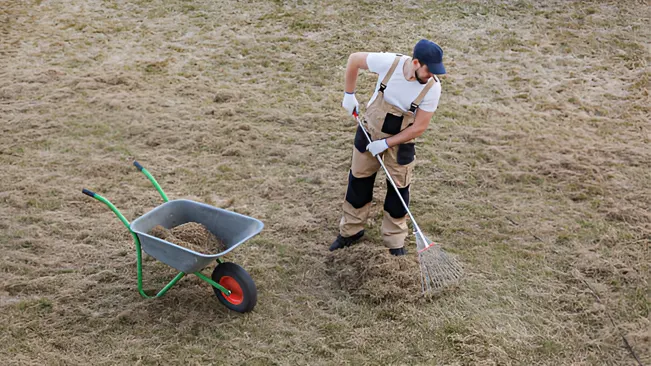
Next, assess the depth of the damage by gently tugging at the grass in various areas. If the grass comes up easily, it may indicate that the root system has been compromised. In contrast, grass that resists pulling usually has a healthier root structure. Evaluate the lawn’s overall health and vigor by checking for any remaining green areas and signs of new growth. This assessment will help you decide whether the damage is superficial or if more extensive recovery measures are needed.
Reseeding and Repair
Once you’ve assessed the damage, reseeding bare patches is a crucial step in restoring your lawn’s health. Start by preparing the soil in the affected areas. Use a rake to loosen the soil and remove any dead grass or debris. This will create a suitable seedbed and improve seed-to-soil contact, which is essential for successful germination. Consider using a lawn seed blend that matches the existing grass type to ensure a uniform appearance and compatibility with your lawn’s conditions.
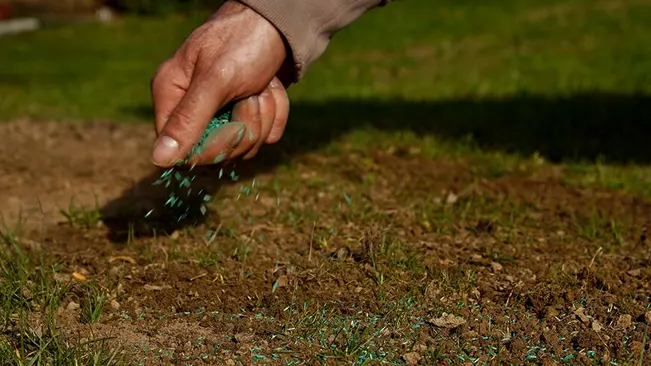
Sow the seed evenly over the prepared soil, following the recommended seeding rate for the grass variety you’re using. Lightly rake the area again to help the seeds settle into the soil. Water the newly seeded areas thoroughly but gently to avoid washing away the seeds. Keep the soil consistently moist until the seeds germinate and establish new grass. It’s also beneficial to apply a thin layer of compost or mulch to retain moisture and protect the seeds from erosion or birds.
Long-Term Care
To ensure your lawn is better prepared for future heat waves, focus on implementing long-term care strategies that enhance its resilience. Start by improving soil health through regular aeration and the addition of organic matter such as compost. Aeration helps reduce soil compaction and promotes deeper root growth, while compost enriches the soil with nutrients and improves moisture retention.
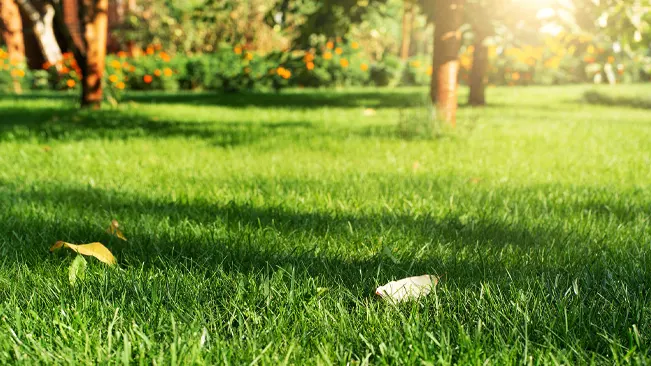
Adjust your lawn care practices to build resilience against heat stress. Implementing practices such as deep watering, mowing at a higher height, and using drought-tolerant grass varieties can improve your lawn’s ability to withstand extreme temperatures. Additionally, consider incorporating a regular fertilization schedule to support overall lawn health and recovery. By taking these proactive steps, you can help ensure that your lawn remains robust and better equipped to handle future heat waves.
Conclusion
In the face of a heat wave, maintaining a healthy lawn requires thoughtful adjustments to your regular care routine. By watering wisely and ensuring your grass is adequately hydrated, you can help it endure the extreme temperatures. Mowing at a higher setting not only provides shade for the soil but also promotes deeper root growth, enhancing resilience. Limiting foot traffic reduces additional stress on the grass, while timing treatments to avoid peak heat ensures their effectiveness without further harming your lawn. Keeping a close eye on weather forecasts allows you to make timely adjustments, optimizing your lawn care efforts. Implementing these essential tips will not only help your lawn survive the heat wave but also set the stage for long-term health and recovery, ensuring a lush, vibrant yard throughout the summer and beyond.
FAQs
- What is the best time to water my lawn during a heat wave?
Water your lawn early in the morning, ideally between 4 a.m. and 10 a.m. This timing allows the grass to absorb moisture before the sun’s heat causes rapid evaporation. Watering in the morning also helps reduce the risk of fungal diseases. - How often should I water my lawn during extreme heat?
Water deeply and infrequently to encourage deep root growth. Depending on your soil type and grass variety, you may need to water every 2-4 days. Adjust the frequency based on rainfall and local water restrictions. - Why should I mow my lawn higher during a heat wave?
Mowing at a higher setting helps protect the grass by providing shade for the soil, reducing moisture loss, and encouraging deeper root growth. Taller grass is better able to withstand heat stress and drought conditions. - How can limiting foot traffic benefit my lawn during a heat wave?
Reducing foot traffic minimizes soil compaction and prevents further damage to the grass, which is already stressed by the heat. Compacted soil can hinder water and nutrient absorption, making it harder for your lawn to recover. - When should I apply fertilizers or other treatments during a heat wave?
Avoid applying fertilizers, herbicides, or pesticides during extreme heat, as these treatments can stress the grass further and may be less effective. Schedule these applications for cooler periods or early in the growing season. - What should I do if my lawn shows signs of damage after a heat wave?
Assess the damage by checking for browning, thinning, or patches of dead grass. Reseed bare patches after preparing the soil and watering the area thoroughly. Implement long-term care practices such as aeration and organic soil amendments to support recovery. - How can I prepare my lawn for future heat waves?
Improve your lawn’s resilience by focusing on soil health through regular aeration and compost application. Implement practices like deep watering, mowing at a higher height, and choosing drought-tolerant grass varieties to better withstand future heat waves. - Is it necessary to monitor the weather during a heat wave?
Yes, keeping an eye on weather forecasts helps you adjust your lawn care practices based on temperature fluctuations. This allows you to optimize watering, mowing, and treatment schedules for better lawn health and recovery.

Charles Hayes
Forestry AuthorI'm Charles Hayes, I bring over 15 years of specialized expertise in landscaping and woodworking, blending artistic design with sustainable environmental stewardship. My career, fueled by a profound passion for the natural world, encompasses extensive education and hands-on experience in creating harmonious, eco-friendly outdoor spaces and responsibly managing forest resources. Recognized for my professional standing, I am committed to continuous learning and certification in cutting-edge practices. My expertise is not only reflected in my work but also in my contributions to community projects, educational workshops, and collaborations with industry leaders. As an authoritative voice in my field, I strive to share knowledge and promote environmentally conscious approaches, making me a trusted resource in landscaping and forestry.











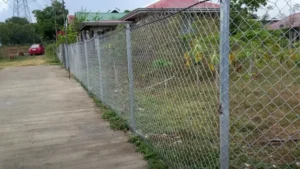

Leave your comment